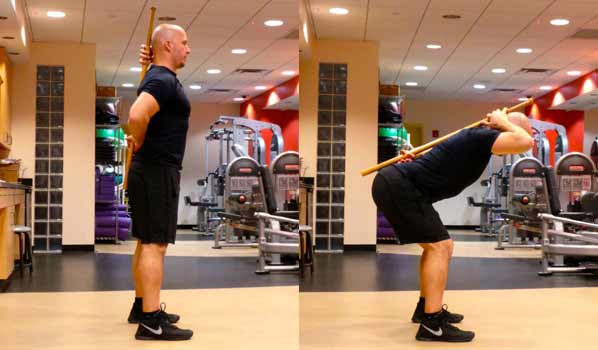
In recent posts, I provided information on how to use constraints in order to facilitate the learning process for the deadlift pattern (accompanying videos are at the end of this post for your review). However Magill (2011) stated that too much use of sensory feedback causes a dependency. I would like to explore this problem more deeply and consider methods of reducing dependency on these constraints.
Clark (1995) stated that movement patterns emerge from constraints imposed upon the person. She believed that constraints herded or steered observable behavioral patterns. I use constraints during the deadlift to provide sensory feedback to the client. This is delivered through the use of a bar against their entire spine, and a bench against their knees. The idea is that the constraints will steer the movements in a more desirable fashion. However based upon Magill’s cautions about dependency, I have become more cognizant about the doses of the constraints I use.

One solution might be to have the client use the bar and bench constraints for two to three sets, then to remove the constraints as a test to see if there is carryover to a constraint-free deadlift. If the deadlift still looks poor, return the client to the constraints for another two sessions, then retest the constraint-free deadlift pattern.
In considering the need for constraints, yet acknowledging dependency can occur, an important question might be- what is an appropriate protocol for maximizing optimal movement pattern acquisition while reducing dependency?
Deadlift Pattern + Knee and Spine Support
Deadlift Pattern + Spine Support
Deadlift Pattern with No Spine or Knee Support
References
Clark, J.E. (1995). On Becoming Skillful: Patterns and constraints. Research Quarterly for Exercise and Sport, 66(3), 173-183.
Magill, R. A. (2011). Motor learning and control: Concepts and applications (9th ed.). New York: McGraw-Hill.
-Michael McIsaac
